<< Previous | Displaying results 401-425 of 6762 for "" | Next >>
Mendel was raised in a large, Yiddish-speaking, religious Jewish family in Sokolow Podlaski, a manufacturing town in central Poland with a large Jewish population of about 5,000. Upon completing school, Mendel worked as a shoemaker. He was also active in a local Zionist organization. 1933-39: Mendel was married and had a family when the Germans invaded Poland on September 1, 1939. Aircraft bombed the town's market and other civilian targets before victorious German troops marched into Sokolow Podlaski on…
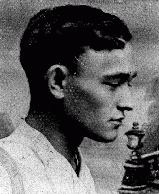
Wilek was the son of Jewish parents living in Lvov, a large city in southeastern Poland. His family owned and operated a honeywine winery. Although they lived amongst Poles and Ukrainians, Wilek's family spoke Hebrew, German and Polish at home and were among Lvov's Jewish intelligentsia. When Wilek was 4, his father died of a heart attack. 1933-39: Jews were often discriminated against in Poland. They found it hard to gain access to schools and jobs. In 1939 Wilek managed to pass the entrance exam and…
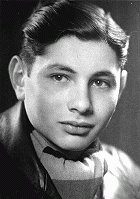
Daniel, usually known as Danek, was one of three children born to Raphael and Amalia Schwarzwald, a Jewish couple living in a village near Lvov. When he was a young boy, his family moved to Lvov, where he went on to attend secondary school and a business college. Daniel opened a lumber export business. He traveled extensively and could speak Polish, German, Russian, Yiddish and English. 1933-39: Business prospered and in 1935 Daniel married Laura Litwak and settled in an apartment in a Christian section…
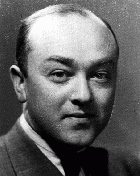
Emanuel, often known by his nickname Manek, was one of five children born to religious Jewish parents in the industrial city of Lvov. After graduating from secondary school, he entered Lvov's polytechnic institute to study civil engineering. 1933-39: At the institute the Jewish students had to stand on the left side of the lecture hall. Once, antisemitic schoolmates broke his jaw because he put up a fight when he was insulted. Manek sued his attackers, but the case was dismissed; the judge said Manek…
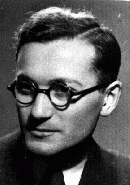
Mina was the daughter of Chaim and Scheindel Schaerf. They lived in the multi-ethnic town of Vinnitsa. Mina came from a religious Jewish family. At 19 she married Josef Litwak, a banker from the nearby town of Dolina, Poland. The couple settled in the industrial city of Lvov, where they raised five children. Four languages were spoken in their household--Polish, Russian, German and Yiddish. 1933-39: The Litwak's two youngest children, Fryda and Adela, had finished secondary school and were planning to…
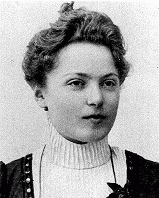
Benjamin was born in the industrial city of Lublin to a large, Yiddish-speaking Jewish family. He attended public school, and after he graduated at the age of 14, he apprenticed at the same tannery where his father was the tannery master. 1933-39: After completing his apprenticeship, Benjamin became the assistant tannery master. After his father's death in 1938, he became the production tannery master. He and his wife, Gucia, lived with his mother at 50 Lubartowska Street. In 1938 the Frydmachers had a…
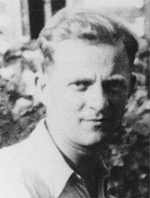
Hersh was born to a Jewish family in Kovno, the capital of independent Lithuania. Hersh's father was a mechanic in a textile factory, and his mother had worked as a hat designer until he was born. The Gordons lived on the first floor of Hersh's grandfather's apartment building. Eight-year-old Hersh was in the third grade at public elementary school. 1933-39: In the summers Hersh and his mother would go to his Aunt Ettel and Uncle Abraham in a small town not far away. They'd take a boat down the river to…
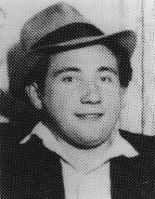
From a Jewish family, Chaia lived outside Kovno, a city with a large Jewish population that was renowned for its Hebrew school system. Chaia ran a grocery store with her husband, a retired shoemaker, and their daughter Yenta. 1933-39: Chaia is expecting her daughter Feiga, Feiga's husband, Josef, and her grandson, Abraham, for dinner. Feiga works so hard all week in her beauty shop, Chaia is glad she can help out by preparing the big Sunday meal. She has baked a special cake for Abe. Chaia hopes the…
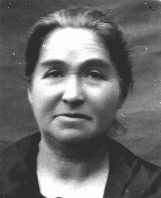
Raised in a Jewish family, Feiga lived with her husband, Josef, in Kovno, a city with a large Jewish community of 38,000. Kovno was situated at the confluence of two rivers, and with its opera company, chic stores and lively nightclubs, it was often called "Little Paris." Feiga was a beautician and Josef was a barber, and together they ran a shop in downtown Kovno. 1933-39: Every day Josef and Feiga walk to their shop, which is near their house. It's hard work, being a beautician--Feiga is on her feet…
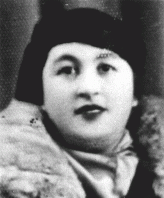
Hanne was born to a Jewish family in the German city of Karlsruhe. Her father, Max, was a photographer. When he died in 1925, Hanne's mother, Ella, continued to maintain his studio. In 1930 Hanne began public school. 1933-39: In April 1933 Hanne's family's studio, like the other Jewish businesses in Karlsruhe, was plastered with signs during the anti-Jewish boycott: "Don't buy from Jews." At school, a classmate made Hanne so furious with her taunts that she ripped her sweater. After the November 1938…
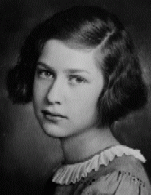
Ernest was one of three children born to a Jewish family in the commercial city of Breslau, which had one of the largest Jewish communities in Germany. His father, a World War I veteran, owned a factory that made matzah, the unleavened bread used during the Jewish holiday of Passover. Ernest was 12 when Hitler took power in 1933. 1933-39: Ernest often got in trouble at school because people called him names. "Christ-killer" and "your father kills Christian babies for Passover" were common taunts. Many…
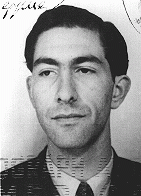
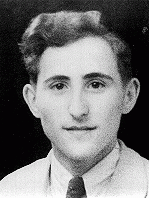
An only child of middle-class Jewish parents, Liliana was raised in a mixed neighborhood of Christians and Jews in Poland's capital. Her father ran a jewelry business and was a reserve officer in the Polish army; her mother was a housewife. Liliana dreamed of going to the Sorbonne and becoming Poland's second female district attorney. 1933-39: The worst part of going to school was being harassed and called a "filthy Jew." Liliana petitioned to enter a prestigious Catholic high school where she was…
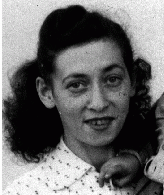
Eva was the second daughter of five children born to Jewish parents. Her father dealt in real estate, and the family owned the apartment building in which they lived. The building had an elevator, a luxury for that time. Eva finished high school, and she began working for her father and studying history at a small local university. 1933-39: Nightlife for young people was lively in Lodz, and Eva often went dancing with her boyfriend, Herman. In 1939 they married. Then the Germans invaded. One day, the…
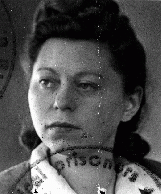
Berta was the youngest of three girls born to a Jewish family in Minsk, the capital of Belorussia. Before World War II, more than a third of the city was Jewish. Berta's father worked in a state-owned factory building furniture, an occupation in which several of his relatives also made a living. 1933-39: Berta and her family lived on Novomesnitskaya Street in central Minsk, only a few blocks from the Svisloch River. Her older sister, Dora, loved to swim there in the summer. By the time Berta was in the…

Iosif was born to a Jewish family in the Belorussian capital of Minsk. He fought with the Tsarist troops in World War I and was taken prisoner by the Germans. When he returned to Minsk after the war, he began working in a state-owned factory building furniture, an occupation in which a number of his relatives also made a living. 1933-39: By the early 1930s, Iosif was married and had three daughters, Hacia, Dora and Berta. The family lived on Novomesnitskaya Street in central Minsk, near the Svisloch…
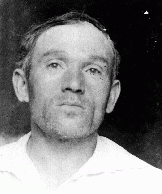
Dora was the second of three girls born to a Jewish family in Minsk, the capital of Belorussia. Before World War II, more than a third of the city was Jewish. Dora and her family lived on Novomesnitskaya Street in central Minsk. Dora's father worked in a state-owned factory building furniture. 1933-39: As a young girl, Dora was athletic and excelled at swimming and dancing. When she was in the second grade, she was chosen to dance the lead part in a New Year's performance. She was also a member of the…
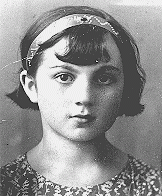
Hacia was the oldest of three girls born to a Jewish family in Minsk, the capital of Belorussia. Before World War II, more than a third of the city was Jewish. Hacia's father worked in a state-owned factory building furniture, an occupation in which several of his relatives also made a living. Hacia attended Soviet public schools throughout the late 1920s and early 1930s. 1933-39: The Rivkins' home was in central Minsk, on Novomesnitskaya Street. Hacia was a talented singer and was known as being the best…
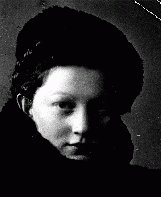
Arthur was born to a Jewish family in Germany's largest port city, Hamburg. His father owned a small factory that manufactured rubber stamps. In the early 1930s, Hamburg was home to the fourth largest Jewish community in Germany, which had numerous social and cultural institutions. 1933-39: By 1935 conditions for Hamburg's Jews were bad. Arthur's family was moved to another part of town and in 1938, the Nazis seized his father's business. On national holidays many German citizens unfurled red, white and…
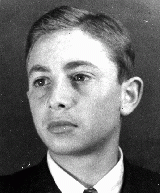
Heinz was the youngest of three children born to a Jewish family in the German university city of Goettingen. His father owned a linen factory that had been in the family since it was founded by Heinz's grandfather. Goettingen had a small Jewish population, and only one synagogue. Heinz went to public school in the city. 1933-39: In 1933 the Nazis took power in Germany. A year later Heinz's family's factory was seized. Three SA men came to their house. An officer set a gun on the table and calmly informed…
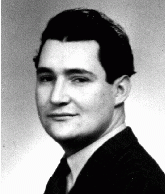
One of nine children, Hela grew up in the Polish capital of Warsaw. Her father was an art and antique furniture dealer and had a store on Marszalkowska Street. Every year, from the beginning of the summer break until the Jewish High Holidays in the fall, the Los family vacationed in the town of Miedzeszyn, located a short train ride's distance from Warsaw. 1933-39: Hela and her family were still at their vacation home when the Germans entered Warsaw on September 28, 1939. As soon as it became possible,…
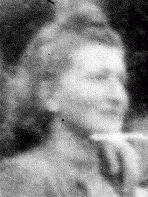
Jozef was the youngest of three children born to Roman Catholic parents in the town of Rzeszow in southern Poland. Jozef's father was a career officer in the Polish army. Jozef excelled in sports, and his favorite sport was gymnastics. He also studied the piano. 1933-39: Jozef was 14 when Germany attacked Poland on September 1, 1939. The invasion affected him deeply. Brought up in a patriotic family, he had been taught to love and defend Poland. The Germans were bombing Warsaw, the Polish capital, but…
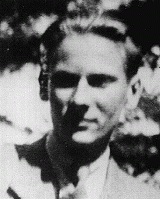
Mendel was one of six children born to a religious Jewish family. When Mendel was in his early 20s, he married and moved with his wife to her hometown of Wolomin, near Warsaw. One week after the Rozenblits' son, Avraham, was born, Mendel's wife died. Distraught after the death of his young wife and left to care for a baby, Mendel married his sister-in-law Perele. 1933-39: In Wolomin Mendel ran a lumber yard. In 1935 the Rozenblits had a daughter, Tovah. When Avraham and Tovah were school age, they began…
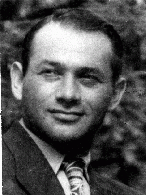
Ben was born to Jewish parents in Warsaw. When Ben was 7, his family moved to Mogielnica, about 40 miles from Warsaw. Ben's father spent much of his time studying religious texts. His wife managed the family liquor store. Ben attended public school during the day and was tutored in religious studies in the evening. 1933-39: After attending school in Warsaw, Ben returned home to help in the family's liquor store. One day, there was a mass demonstration in town. People chanted, "Don't buy from the Jews!"…
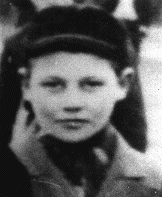
Frimit was one of eight children born to Yiddish-speaking, religious Jewish parents. The Bursztyns lived in the heart of the same Jewish neighborhood in Warsaw where Frimit's father owned and operated a bakery located on Zamenhofa Street. In 1920 the Bursztyns moved to a comfortable, two-bedroom apartment in the same neighborhood at 47 Mila Street. Frimit attended Warsaw public schools. 1933-39: By 1939 six of Frimit's brothers and sisters had already moved out. Only Frimit and her younger brother were…
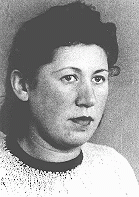
We would like to thank Crown Family Philanthropies, Abe and Ida Cooper Foundation, the Claims Conference, EVZ, and BMF for supporting the ongoing work to create content and resources for the Holocaust Encyclopedia. View the list of donor acknowledgement.